|
The Tides of Change series takes a deeper dive into the positive changes in benefit of marine life in captivity or the wild, and where we need to continue focusing our efforts to protect these species. Read the first installment here. SIGN MY PETITION TO ASK EDUARDO ALBOR TO SAVE TOKI'S FAMILY: www.change.org/ask-albor-to-save-the-southern-residents It has been over a month since the passing of Tokitae/Sk'aliCh'elh-tenaut left us heartbroken and in despair. Many of us, including myself, are still processing and reflecting on the significance of her loss. However, we must accept this without placing blame on ourselves and continue the fight in her legacy. Her family and kin - both wild and captive - still need us. We cannot give up. Perhaps the most appalling - and revealing - thing that I have noticed in the wake of her death is the deafening silence concerning Toki's endangered family from Eduardo Albor, the Miami Seaquarium, SeaWorld and other large voices in the marine park industry. Let us not forget that the captures in the 70s - which brought Toki into captivity in the first place - are a large reason that the southern resident orca population is endangered. Now they are threatened by lack of food, for which the lower snake river dams are a primary culprit. It is the responsibility and the obligation of the marine park industry to do their due diligence in righting this wrong that they started. This is what we must fight for. This is Toki's legacy - and it is close to being snuffed out. Albor and The Dolphin Company have an opportunity to make a difference and show that they truly care about Toki and all that she gave them despite being ripped away from her family at a young age. The remaining animals at the Miami Seaquarium live in squalid conditions and also need to be moved out. I am by no means encouraging that they stay there, but in the process of rebuilding the park or tearing it down and starting anew, Albor has the chance to do something with a lasting impact. I propose that a display be made - available outside of the park, with no ticket required - so that everyone will be able to learn the stories of the animals who died at the park, including Toki and Hugo, and learn about Toki's endangered wild family and how to protect them. To date, the Miami Seaquarium has tried to cover up the deaths of all the animals who have died there. They deserve to be honored and remembered, after all the countless years that they have been exploited Additionally, with his influence in owning marine parks, Albor is able to use his voice to work with SeaWorld and other companies to encourage the federal government to breach the dams. They could create a petition for park visitors to sign and pledge to do their part in helping these majestic animals survive. SeaWorld also needs to do even more for the endangered Southern Resident orca population. While they have supported research and conservation efforts and provided grants to aid the population, they have not been vocal advocates of breaching the Snake River dams that dramatically impact their main food source - Chinook Salmon. With their corporate reach and the amount of visitors they receive each day, they could really sway the public voice by giving people easy steps to voice their concerns to representatives or create a petition for visitors to sign at the parks to breach the dams. It would be empowering to educate park visitors about this time and show how we as a society have moved forward and now see the species differently - in part, because of the industry following these captures. This history would be incredibly informative and gives these parks a chance to admit their wrongs in the past and show how they want to change it for the better. Albor and the marine park industry as a whole need to take responsibility and fully right the wrongs done to Toki and her family so that her legacy may live on and we can continue to appreciate and honor these beautiful animals. If you want to learn more about the southern residents, the threats they face, and how you can take action, please visit the following links and watch the video below: - https://www.whaleresearch.com/encounters (latest updates on whale sightings and photos) - https://www.whaleresearch.com/orca-population - https://www.whaleresearch.com/orcassalmon - https://www.whaleresearch.com/action (take action to help the southern residents here) - https://www.epa.gov/salish-sea/chinook-salmon - http://orcanetwork.org
0 Comments
The Tides of Change series takes a deeper dive into the positive changes in benefit of marine life in captivity or the wild, and where we need to continue focusing our efforts to protect these species Source: Storyblocks/Zach Affolter The morality of keeping marine mammals in captivity has been a highly contested debate for many years, and because of its popularity, SeaWorld has been at the center of these discussions. Some questions that are often raised include: Are zoos and marine aquariums educational? Is there benefit to keeping these animals in captivity to better our own species? Has SeaWorld been a leader in conservation or failing to help their wild counterparts and mis-guiding our perception of them? Has the company been willing to evolve with changing public perception? In this first installment of Tides of Change, we will look at SeaWorld's progressive changes post-Blackfish and whether or not they, as a corporate entity, are true leaders of the marine park industry like they claim to be. I will also discuss several ways SeaWorld can move forward in their conservation, education and animal welfare efforts. This article will not explore in detail the ethics of captivity (so if you're thinking 'but them being in tanks is still wrong!' or 'so this shows that keeping them in captivity is good' - that is not what this discussion is about) or whether these animals should be released as that strays from the main focus and requires more analysis. However, we will briefly look at how conditions in the parks have changed and how they can continue to improve. I also did not cover SeaWorld's scientific research due to the present length of this article, but am hoping to discuss these topics and more in future blogs - let me know if there is another you would like to hear about in the comments! The bottom line is there are many people on both sides who are passionate and care about these animals. To truly make a difference for them and their wild counterparts, we need to come together. Regardless of your stance on the issue, I encourage you to open your mind and challenge yourself to learn and grow. Therefore, the majority of this post will take a relatively neutral stance so you have this opportunity. At the end of the day, we are all fighting for the same thing. We care about these animals, the oceans, the planet, and want to make a difference. Let that be the focus. If we stop fighting and allow each other to think differently and learn from those perspectives, we can really get the ball rolling. I am on this journey with all of you. We are in this together. Personal Reflection & ChangePhoto taken July 7th, 2016 at SeaWorld San Diego | Source: Zach Affolter / The Loving Ocean Before we take this journey, I want to reflect briefly on my sentiments in an article I wrote almost 10 years ago for The Dodo, and on how I have changed since then. I claimed that SeaWorld fails to educate students, stating that “SeaWorld fails to send the message [about conservation, protection, and education] because although they say this is necessary, they fail to show it in each and every breath of the corporation.” What I didn't realize at the time is that I failed to paint the full picture of the issue, and most importantly, I didn't do justice to the many volunteers and staff at these parks who DO care and work hard to make a difference for the animals there. As a corporate body, SeaWorld stifled many of these voices and the changes they wanted the park to embrace. One example was illustrated by former trainer John Hargrove in his book, Beneath The Surface. He detailed how the changes he wanted to implement were often shut down. Another example is when CEO Serge Rivera resigned in 2020 because “of disagreements over the board’s involvement in the decision making of the company.” At the corporate level, it was clear that these voices needed to be listened to more and this is still presently an area of opportunity. Nonetheless, a lot has changed as of this year, both within myself and for SeaWorld. I no longer feel as strongly about the sentiments expressed in this article I wrote, but rather that SeaWorld has a chance to make a true, lasting impact with their corporate leverage and really change the tide in marine conservation and education. The company can become a place where the next generation is truly educated and inspired to become passionate, taking action to save the planet. As activists, it is easy to keep demanding for more instead of recognizing the changes SeaWorld has already made. However, if we want them to embrace change and their promise to protect the species we love, it is crucial to show encouragement and support to those efforts than allow it to stagnate by demanding more. The pendulum has shifted and growth has begun, we need to let it flourish. Conservation & Educating Park Visitors: How Has SeaWorld Improved?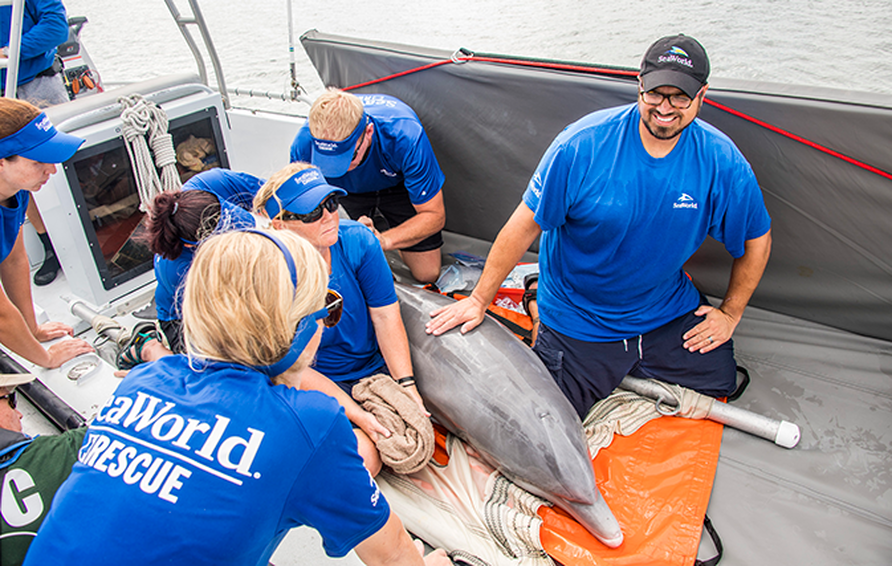 Sharkie suffered severe shark bite wounds in June, 2018. After being rescued and rehabilitated at SeaWorld Orlando for four months, she was released back into the ocean | Source: SeaWorld Parks The most important issue is the bigger picture - how do we protect and conserve wild species with the ever-growing threats imposed by humans? SeaWorld claims this is the biggest value to keeping cetaceans in captivity, that seeing them will inspire people to take action. Prior to Blackfish, I heavily criticized SeaWorld as a corporation for not taking enough action on this front. I should have begun this criticism by acknowledging the rescue efforts and conservation grant funding they assisted with back then. I should have been more clear in saying that despite these efforts, SeaWorld did not demonstrate that they were truly interested in conservation or education through their actions (or lack thereof). Some examples at this time included SeaWorld San Diego being cited for polluting Mission Bay, no discussion about drive hunts, whaling, or other threats to wild cetaceans in the parks, not enough focus and engagement with park guests to take action, false information being provided in the education they did provide in shows or displays (such as lifespan or the cause of dorsal fin collapse), and the vast majority of research on captive individuals not being entirely applicable to those in the wild. So after these shortcomings, where has SeaWorld made improvements on the conservation front years later? To start with, they have begun to put their money where their mouth is a lot more. In 2022, the SeaWorld Conservation Fund announced 22 new grants to support third-party studies, rescue, and conservation programs to protect marine animals and their habits. According to the Association of Zoos and Aquariums, these programs directly benefited "coral reefs, dolphins, manatees, penguins, seals, seabirds, sea turtles, and whales." Some of the benefiting organizations include Woods Hole Oceanographic Institution, the Norwegian Orca Survey, the Coral Restoration Foundation, and Restore America's Estuaries. You can read more about these grants and initiatives here. In response to the damage caused by Hurricane Ian that year, the SeaWorld Conservation Fund also provided emergency grants to 10 conservation organizations based in Florida that were impacted by the storm. SeaWorld also worked with the National Fish and Wildlife Foundation and NOAA to give $1,129,000 in grants this year to "increase the availability of priority prey (Chinook salmon), reduce sound and vessel disturbance in killer whale habitat, and to monitor the health of Southern Resident killer whales in the coastal waters of Washington." SeaWorld's Coral Rescue Center | Source: Dwayne Bevil/Orlando Sentinel Aside from grants and funding, SeaWorld is creating attractions with conservation and education the primary focus. Earlier this year, SeaWorld Orlando opened a new Coral Rescue Center where park visitors can see and learn about the importance of coral reefs, the threats they are facing, and current conservation efforts to restore them. The center features 350 coral colonies and 15 different species, which were transported from Orlando's Florida Coral Rescue Center which aims to repopulate Florida's Coral Reef. Just recently, SeaWorld also announced a new program to educate park visitors about shark conservation. According to SeaWorld, the program gives guests a "full day of unique and immersive experiences to get up close to see, feed, touch, and learn about sharks, know what it's like to move like a shark on shark-inspired thrill rides, take home shark swag, and honor the ocean's VIPs (very important predators) with $25 of every ticket going to shark conservation." A new attraction is also in the works to acquaint children with animal rescue work and encourage them to embrace conservation. “This first of its kind play area is another exciting addition to our amazing educational theme park and puts marine animal rescue at the forefront with our guests,” SeaWorld San Diego Park President Jim Lake said in a statement, according to the San Diego Union Tribune. “Rescue Jr. is a fun and exciting way for our younger guests to learn about the animal rescue that our dedicated teams do every day, 365 days a year. No matter how young, my hope is that all guests come away with a better understanding of how important it is to be a part of protecting the animals around us, and maybe we can be the spark that ignites a passion in kids to become animal rescuers, scientists, veterinarians or conservationists.” You can read more about the features this attraction will have here. On the note of animal rescue, SeaWorld has also continued to make strides on that front. I argued before that this was used as a distraction to the captivity issue, but in our discussion of the bigger picture in protecting the oceans and the planet, and in SeaWorld's progressive changes, it cannot be ignored. The company surpassed 40,000 rescued animals in 2022, beginning with their first in 1965. Dr. Chris Dold, Chief Zoological Officer of SeaWorld Parks and Entertainment, stated in the press release for this milestone, "Our teams are responsible for the care and well-being of thousands of animals – both those rescued and in residence – and while we'd much rather live in a world where wildlife doesn't need our help to thrive in healthy abundance, that's not today's reality. Rescue and rehabilitation can save the lives of individual animals, and in some cases supports the preservation of endangered and threatened species, like the Florida manatee. That is why we do this work, and why it is so important for accredited zoos and aquariums like ours to continue efforts to help animals that cannot survive on their own." Some of these rescue stories have happy endings. Many activists accuse SeaWorld of never releasing the animals that they take in, but in fact this is not the full picture. There are many documented cases of SeaWorld rehabilitating and releasing rescued animals - including birds, turtles, manatees, and even dolphins or other cetaceans among other species. One such case was Sharkie. In February 2018, the female dolphin was found suffering shark bite wounds on Ponte Vedra beach in Florida. She received treatment for four months at SeaWorld Orlando, which included "medicine and antibiotics, physical therapy and treatment for her wounds on her body and right pectoral flipper" according to the St. Augustine Times. After she recovered, SeaWorld successfully released her back into Florida waters. SeaWorld's improvements on the fronts of conservation, rescue, and education do not absolve them of their shortcomings, but we need to acknowledge their positive actions and encourage them so they recognize what the right path (both business-wise and morally) is according to the public. These actions made a difference for Sharkie's life, and those of the others they rescued. We care about that too, right? Orca and Dolphin Shows: How Has SeaWorld Improved?The content in SeaWorld's orca and dolphin shows has also changed since Blackfish to become more educational and empower park visitors to embrace conservation and protection efforts. SeaWorld expressed this goal in 2019, and their desire to continue these changes after public pressure. I encourage you to read the linked article above. While dated some, the author provides a balanced look at both sides of this discussion. It is still up for debate whether seeing cetaceans in captivity gives visitors a true glimpse into their majesty and behavior in the wild, or if having them perform at all is ethical. However, it is clear that several changes were made in credence to what people begged of the company. In this section, I compare SeaWorld's old Believe show to their current Orca Encounter presentation, as well as current dolphin shows at two different parks, to examine these changes in more detail. SeaWorld's 'Believe' ShowThere wasn't much emphasis on education, conservation, or the natural behaviors of orca in the days of SeaWorld's Believe show, between 2006-2011. While there is debate in the impact of seeing their beauty on display in these older shows, it was clear that they primarily served as entertainment to attract and inspire guests. SeaWorld San Diego's Believe Show - November 3, 2011 | Source: Sharp Productions / YouTube According to the Orlando Sentinel when the show made its debut, the "show delivers a stadium full of new effects and orchestral music to dramatize what one reviewer has called 'a killer whale ballet.' But the biggest difference from old Shamu shows may be that Believe is as much about the trainers as the whales. The 30-minute show mixes a tale about a young boy who dreams of killer whales, with the real, first-person stories told by SeaWorld’s trainers." Sam Davis, then-Supervisor of Animal Training, also stated in his interview with the Sentinel that the show was not aimed at showcasing the animals' behaviors but at inspiring people. After re-watching the Believe show, this certainly appears to be the case. It focused primarily on the story between the trainers and the whales and how those bonding moments created a lasting impression. While it does touch on how incredible and inspiring these animals are, there was a lot left on the table. It was a missed opportunity to truly educate and empower park visitors about the species, the threats they face, and how they can make a difference. SeaWorld's Current Orca Encounter PresentationIn comparison, their Orca Encounter show (which debuted in 2020 across all parks - some earlier) demonstrates they are trying to make more of an effort to educate and empower their guests. After the show's opening, a narrator explains the important ecological role that orca have in the wild as apex predators. Not only do they focus on orca - a species that has become the center of public attention - but organisms at different levels of the food chain, explaining how they are all linked to the ocean's health. This is an important, critical concept for people to understand in better protecting marine species. One that was not explicitly mentioned in earlier editions of the park's shows or educational programs. SeaWorld Orlando's Orca Encounter Presentation - June 30, 2023 | Source: Ripple Footages / YouTube In this new presentation, the tricks performed are intended to demonstrate and showcase orca intelligence and behavior opposed to only inspiring or entertaining visitors. Additionally, they introduce each whale by name, whereas in the Shamu era their names were not often publicly stated unless asked. Referring to them by name helps to illuminate that each animal is an individual with their own personality instead of just a performing animal. This adds another dimension of connection to them. One of the points I made in back in 2014 was that kids often didn't understand what an orca was if they only saw them at SeaWorld before these changes. They often only said, as one teacher I interviewed at the time told me, "that's Shamu." Another change worth noting is that threats to wild orca are discussed and people are encouraged to take action, though what that entails was not expanded on. While I wish they listed specific ways that people could get involved, this is an important change and one that I genuinely appreciate. The need grows ever more dire to protect marine life, and for people to take action. SeaWorld's Current Dolphin ShowsThere is no detailed educational component in SeaWorld San Diego's current dolphin show like in the Orca Encounter (as confirmed by SeaWorld San Diego stating that this show focuses on the dolphins "showing off their incredible athleticism and [how they] celebrate life"). Compared to older shows, however, it does better showcase the natural abilities and intelligence that dolphins possess. SeaWorld San Diego's Dolphin Show - June 25th, 2023 | Source: H2OMammals / YouTube The SeaWorld Orlando show appears to have a more educational aim in comparison. According to the park, it explores "their natural behaviors and the traits they’ve evolved to help them survive and thrive. Hear what’s behind their playfulness and how it helps us make discoveries. Learn the role they play in our planet’s oceans, as well as the threats they face. Experience every thrilling moment and take away inspiring insights about caring for our natural world, only at Dolphin Adventures." The trainers share behaviors and basic morphology/anatomy of the species, and briefly discuss some of the threats they face in the wild, encouraging people to want to make a difference for them by showcasing their abilities. It would be nice if all of the parks included and featured this element in their shows. Educational content can still be engaging and inspiring to watch. After analyzing their shows, it is apparent that SeaWorld has tried to make strides in displaying more educational and informative programs. I still feel that some of the behaviors we see don't fully match those displayed in the wild where you can see their natural habitat, and that there is room for further improvement, but it is important to acknowledge and recognize these changes. After all, such programs will help empower others to gain the same passion and care that we all have for marine life, regardless of our stance on captivity. Whether or not having these animals perform in captivity is necessary to achieve this goal is another discussion. How Has SeaWorld Improved Welfare For Its Animals?Back in 2014, I described ways in which captive orca suffer due to the stressful conditions captivity presents: "Killer whales in captivity are not healthy, and according to the Center for Whale Research and NOAA, live an average of 15 years in captivity compared to 30 for males and 50 for females in the wild. They are fed stress pills and benzodiazepine due to the immense toll of performing in front of a crowd and being confined in a pool that is 1400th the 80-100 miles orcas swim in the wild every day." Aside from this, they and other captive cetaceans were unable to escape frequent attacks from tankmates, calves were regularly separated from their mothers, they were bred at incredibly young ages, forced to perform dangerous behaviors while pregnant, and conditioned to perform in order to receive food (this does not mean they were starved, only conditioned, but this is still a debated welfare/ethics issue). If you are curious on how SeaWorld currently views and practices marine mammal training, you can read their philosophy and methodology on their website. If we are looking to instill change for their welfare, it is of course important to understand where we are coming from. Image taken at SeaWorld San Diego on July 7th, 2016 | Source: Zach Affolter / The Loving Ocean So what has changed in terms of the welfare for SeaWorld's captive animals? Former SeaWorld CEO Joel Manby announced in 2016 that the parks would end their orca breeding programs and remove the theatrical element from their orca shows (as discussed in the prior section). Many celebrated this as an important first step. According to NBC News, whale biologist Dr. Naomi Rose called this “a monumental and important first step forward in achieving a more humane business model." Aside from this, not much has changed for the welfare of the animals in terms of their tank conditions or caretaking prior to Blackfish. SeaWorld initially announced plans for the Blue World Project - to expand their Killer Whale Exhibit and create a more natural setting. However, these plans were abandoned after their breeding program came to a halt following public pressure. It is easy to understand why SeaWorld no longer wanted to expend the cost of a tank expansion from a business standpoint, with the remaining orca in captivity at their parks being the last and the public voice not supporting an expansion. The budget for this plan was partially re-allocated on building new roller coaster rides at each of the parks, which seems to be the company's main focus now, with new ride announcements coming regularly. This is one recent change that I am worried about. I would like if SeaWorld remained a marine park focused mainly on conservation and education, not become another Disneyland or Universal Studios. What they have been doing is necessary and needed with the rapid damage we are causing to the oceans. Some practices need to change, but I don't want them to lose this focus and pump all their money into new roller coasters. Where Does SeaWorld Need To Go From Here?We've discussed SeaWorld's progressive changes in the last few years. They placed more effort and money in conservation programs, continued to make strides in their rescue and release endeavors, improved attractions and shows to be more educational and inspire visitors to take action, and agreed to end their orca breeding program after public pressure and outcry. I genuinely appreciate these changes, even if some may have been to regain public favor after Blackfish (that's not necessarily a bad thing - it is a business, it will respond to public desire to maintain profit). However, SeaWorld has also shown a trend that it deems public desire to be new roller coaster rides, with continual announcements of these new attractions. I worry that one day they will lose their focus entirely on conservation should this continue. We cannot afford to ONLY think about the captive animals at the parks - yes they matter and deserve the best possible - but not at the cost of this company abandoning all of the good conservation and education work they are doing to help the oceans and marine life. That doesn't necessarily mean keeping them in captivity is acceptable, but we also need to understand that there is a bigger picture here. We cannot forget to advocate the best for the animals in captivity, but we also cannot forget to advocate the best for those in the wild. SeaWorld abandoning their conservation focus, or shutting down, is not presently the best interest. We need to collectively make sure that this is clear to them as a business. There are also still many ways in which the company can improve. These changes start with us, for better or worse. SeaWorld is a business - it will listen to what drives sales. As potential customers, we have a say. We should embrace and recognize their positive changes, or else SeaWorld may not see a reason to continue these efforts, or abandon them for not being "cost wise" like the Blue World Project. They have taken a good first step in becoming leaders in the marine park industry, and in conservation and animal care. By demonstrating that we recognize these efforts, it shows that such positive changes are favorable to their survival as a business. However, there is still a lot that SeaWorld needs to improve on before they fully live up to this claim. The tank conditions for their marine mammals have not changed much in the wake of sea sanctuary or tank expansion discussions, and there are more ways the corporation can use its leverage to make a difference for both captive and wild marine animals worldwide. Sanctuary or Bust? How To Improve Current Conditions In The Meantime? SeaWorld San Diego orca show | Source: Adobe Stock The end goal for many is to "empty the tanks" - to retire all cetaceans to seaside sanctuaries. Others also want SeaWorld shut down entirely. I do not want this latter outcome - I believe that with their corporate influence and leverage, they have a chance to fully turn the tides in marine conservation and use their voice to empower people to take action. However, if SeaWorld fails to meet changing public perception, them closing down is a possibility. I don't want it. Like I discussed above, it is not in the best interest of wild marine life that SeaWorld has made a difference for. For seaside sanctuaries, there are many hurdles and unknowns, but if the conditions are right and truly in the best interest for the animals, I would support it case-by-case for each individual. Joel Manby also made it clear in his op-ed for the LA Times that SeaWorld has no intentions of retiring their animals to seaside sanctuaries, and should this stance change (it hasn't since he resigned as CEO), such facilities would still take time to build and become viable for each of the captive whales. Sanctuaries could also provide additional educational and learning opportunities with the right infrastructure. For example, even in their existing exhibits, it would be helpful if SeaWorld installed 24-hour camera livestreams similar to those at Monterey Bay or other aquaria, for people to watch and study at home. This would greatly improve their educational and research efforts. A tank expansion is also an option that could benefit their animals should a sanctuary plan not be the best answer. While an expansion plan was abandoned for their captive orca, this idea could be embraced again if the public showed support and willingness to visit for the remaining years orca resided at SeaWorld. This plan is also possible for their other marine mammals where no such breeding restrictions have been announced as of yet. However, similar to a sanctuary, such expansions would take time to build. What would happen to the animals while they wait for a sanctuary or an expansion? Are we content to allow them to remain in their current conditions until such option is ready or are there beneficial short-term changes that can be implemented? I am not fully qualified to evaluate or recommend such specific changes to the welfare at the parks. However, we need to advocate and encourage the best available conditions for these animals and the changes that benefit them, even if small at the time. What "best conditions" entails is still widely up for debate, but we need to look at the most feasible and efficient changes first to ensure the animals receive the best care as soon as possible. These whales are going to be at SeaWorld for the foreseeable future, unless something remarkably dramatic happens. We need to have more open discussion about how to make their lives better there instead of seeing it as "sanctuary or nothing." It is true that a tank is still a tank, but any positive improvements to their welfare is important and should be at the forefront of our passionate discussions. It is not just about what we believe the ideal outcome to be, but about what is best NOW for the animals. We need to be practical. Better Use Of Leverage Needed For Conservation and WelfareImage of 'the cove' in Taiji, Japan. SeaWorld is yet to fully denounce and work towards ending the dolphin slaughters and captures that occur here | Source: Dolphin Project My biggest gripe with SeaWorld as a corporation is their relatively silent voice on many issues and threats that marine animals face, including those the marine park industry poses to them. Despite their improvements in conservation, there is a lot more to be desired with the voice and leverage that they possess as the largest marine park franchise in the world. SeaWorld has remained relatively silent about the Miami Seaquarium or other parks around the world that fail to meet industry standards for animal welfare and safety. With the large amount of respect other marine parks have for them, SeaWorld could have encouraged the Seaquarium to embrace better standards and meet existing legislation requirements. If they didn't listen, they could have reached out to APHIS about Toki's tank being illegally small and assisted in rebuilding her tank that is still falling to pieces. SeaWorld could have exposed, and taught them how to improve, their poor food preparation practices that led to some of Toki's prior health concerns. If SeaWorld were to publicly call out parks like the Seaquarium that fail to meet industry standard, the impact would be astronomical. It would better demonstrate the respect and care that all of these parks claim we should have, drive for better caretaking practices, and improve the lives of those housed at marine parks across the world. Instead, orca such as Kshamenk, Kiska and Tokitae, and countless cetaceans at other poorly run parks across the world, have been allowed to languish in absolutely abysmal conditions for years with no public action from inside the industry. While some internal discussion may have occurred, it was never mentioned publicly and no change came directly as a result. I understand there are restrictions to what SeaWorld could do, but they haven't even made a concerted public effort yet. SeaWorld could even produce a new TV show alongside their animal rescue program on PBS that showcases how they encourage parks to embrace animal care standards and better promote education and conservation. The parks, the public, and most importantly the animals, would all benefit from such an endeavor. SeaWorld has yet to actively denounce and take action against the annual drive hunts and captures in Taji, Japan. They have stated briefly and vaguely in public statements that they oppose the hunts, and do not acquire animals from them, but with their leverage they could be doing So. Much. More. They could work with parks in Japan and around the world so that they do not take dolphins from the hunts and thereby remove its profitability. The fact that they don't is especially damning because successful parks like SeaWorld indirectly aid to the practice continuing. Parks with less favorable business models see profit in the industry and thereby want to acquire dolphins from the drives. Additionally, SeaWorld could work with marine parks in Japan to aid in improving public understanding and appreciation of the species so they are valued instead of seen as pests by the fishermen who drive and butcher them. They could create a coalition with these parks that publicly denounces the drive hunts, calls for their end, and works to create such change. Considering that SeaWorld is trying to teach us to love and appreciate the species, denouncing and taking concrete action against the drive hunts is a step they must take. SeaWorld needs to do even more for the endangered Southern Resident orca population. While they have supported research and conservation efforts and provided grants to aid the population, they have not been vocal advocates of breaching the Snake River dams that dramatically impact their main food source - Chinook Salmon. With their corporate reach and the amount of visitors they receive each day, they could really sway the public voice by giving people easy steps to voice their concerns to representatives or create a petition for visitors to sign at the parks to breach the dams. SeaWorld also still has not taken responsibility for their large part in the population's decline due to the orca captures in the 70s. It would be empowering to educate park visitors about this time and show how we as a society have moved forward and now see the species differently - in part, because of the industry following these captures. This history would be incredibly informative and gives SeaWorld a chance to admit their wrongs in the past and show how they want to change it for the better. There are a lot of threats that people are not properly educated or informed about at SeaWorld parks. For cetaceans specifically, some of these include whaling, the Grindadrap, the captures in Russia, poor boating and fishing practice, and the relatively unknown stranding behavior in pilot whales. Other threats that are applicable to all the species there include the great pacific garbage patch, plastic pollution, bioaccumulation of toxins, and ocean acidification. While some of these are mentioned, current information fails to paint the full picture for those learning. It would be helpful if there were displays relating to each species and how these threats impact them specifically or act as a cascading effect through multiple trophic levels, like SeaWorld briefly discusses in their Orca Encounter program. I applaud SeaWorld for starting to up their game on education, but there is still much more that they could teach parkgoers to better understand the threats marine organisms face and what actions they can take to help. Lastly, SeaWorld higher-ups need to listen to the voices of their passionate trainers, educators, volunteers, and staff who are eager to make a difference. The company needs to start listening more to the changes these people want to implement at each of the parks and give them the necessary tools and funding to improve conditions, educational programs, and conservation efforts instead of shutting them down. In middle school, I attended a SeaWorld camp program that began to shape my passion for the oceans and marine life. One of the most impactful teachers I had in high school - when I campaigned to remove school functions from the parks - was a former SeaWorld educator and animal caretaker. He helped shape my passion and knowledge, while encouraging me to pursue a career in the field of Marine Biology. I've seen how passionate and knowledgeable some of these employees are, both in their roles and in their daily lives. If they are given the right support, their positive impact on students, guests, and the animals can be even stronger. SeaWorld needs to instill a more supportive culture moving forward so these passionate voices can be heard both by the company and park visitors. The park mission is embodied by these everyday interactions, after all. In conclusion, if SeaWorld makes a concerted effort to use its voice and leverage as a company, it could really sway the tide in the fight to protect the oceans and all life within. This is why I don't want to shut SeaWorld down. I see the impact it could have and recognize how its efforts have already begun to make a difference. It would be a great loss if SeaWorld fails to fully commit to this, abandons it in place of roller coasters because that is public desire, or shuts down entirely. We need to encourage SeaWorld to keep going further. To adapt. To make a difference. SeaWorld In The Future - What Happens Once Their Remaining Orca Are Gone?LightAnimal CGI dolphin and whale encounter highlights | Source: LightAnimal / Youtube Once the last orca are gone from SeaWorld, with this generation the last, the education and encounters revolving around this incredible species don't have to stop! We can still provide inspiring programs for the next generation to love and admire this species - and all others - just as we do. Technology has improved in recent years and immersive CGI encounters are now feasible. LightAnimal has already developed one such program. According to Erich Hoyt, Research Fellow with Whale and Dolphin Conservation, "LightAnimal is a new way to experience life-size realistic, exciting and interactive animations of whales, dolphins and other wildlife and their habitats. The moving images are state-of-the-art and can be projected inside and outside on the faces of buildings. Highly recommended for aquariums and museums that want to introduce whales and dolphins to the public but without keeping them captive." Light Animal's work was just recently featured at the AOAO Sapporo Aquarium, featuring displays of orca. In the video here, you can see the visible impact that it has on the viewers. Imagine being able to see any species to scale up close, in their natural setting, and being able to follow them as they move. Sure it's not the real thing, but it can still be impactful and inspire people to protect the species in the wild without holding these intelligent creatures in captivity. A sign that reads, "If you don't want our only memory of this species to be a hologram, here is how you can help..." would be so empowering. I would love if SeaWorld did something like this, including in combination with their current exhibits. Concluding RemarksImage taken at SeaWorld San Diego on July 7th, 2016 | Source: Zach Affolter / The Loving Ocean There will be a time when we look back and realize that by keeping these intelligent creatures in captivity, we really were not respecting them all along. There will be a time when we all value the oceans, the planet, and all life in high regard instead of taking it for granted.
However, we are not at that point of awareness collectively yet. There is still a lot of growth and change yet to happen, but we have come a long way from the days we feared and captured cetaceans - in part because of SeaWorld's work. There is hope on the horizon. SeaWorld has changed from a marine circus that captured cetaceans in the 70s to a park making strides in conservation, rescue efforts and education. While there is still a lot to improve on, SeaWorld's changes also demonstrate how we have collectively changed our outlook on these animals, and on the oceans. I no longer feel pessimistic in that SeaWorld fails students, but rather that it has a chance to teach, inspire, and empower them to make a difference by continuing down the right path. There is much debate on what should happen to the animals still residing at the parks, but the fact we are so passionately discussing their welfare is a welcome sight compared to when I first entered the scene as a high school student. We need to continue these discussions to give these animals the best possible life they deserve while they are our teachers in the parks. We need to encourage SeaWorld to speak out and use its influence to ignite change within the industry and for the oceans as a whole. If the company fully embraces its mission of making a difference in the lives of marine animals, either at their parks or in the wild, there is true hope in changing the tide. We need to be open to what is truly best for the animals at the present moment and not just the ideal outcome. More importantly than anything, we need to come together in our shared passion and love for the oceans. We are all at different points on this journey based on our knowledge, perspective and experience, but if we share the same passion... We can be the tide that washes across the sea. Thank you all so much for reading! Note: Please feel free to leave a comment below sharing your perspective on SeaWorld's changes or how they need to continue improving. Did I miss a change that SeaWorld made? Is there something you think I left out that also needs to be changed? Or is there something you'd like to see in a future article? What would you like to see in the next Tides Of Change installment? Let me know! Please share this article to encourage discussion, thank you! Please keep conversations respectful. Remember that most here are also coming from a place of wanting what's best for the animals and the oceans, our disagreements on what that entails stem from our mutual passion. We all have a unique perspective and we can learn from each other - let's keep that the focus. Any comments that serve to stagnate discussion, promote spam, or are deemed harmful or rude will be removed. I was not planning on writing detailed commentary about the recent announcement to retire the orca Tokitae back to her home waters, but the more I read, the more I see reason to share my own perspective. I will be writing a series of posts about Toki, her plight, and exploring the different ways people think we should move forward in giving her a better fate. This post serves as an introduction to those discussions we should be having to best suit Toki’s welfare. Some of you may have only just heard about Toki – welcome to the journey! Over 50 years ago on August 8th, 1970, she was captured in Penn Cove of Whidbey Island, Washington State along with several other young orca belonging to the southern resident population. Once sent to the Miami Seaquarium, she was given the stage name “Lolita.” The Lummi nation sees her as a member of their people, giving her the name Sk'aliCh'elh-tenaut. During her time in captivity, Toki witnessed Hugo, her tankmate and podmate, bash his head repeatedly against their enclosure until he died of a brain aneurysm. Since that day, she has never seen another orca, lingering in abysmal conditions that should have been deemed illegal under APHIS regulations. Toki belongs to one of the most well-studied groups of orca, and it is believed that her presumed mother, Ocean Sun (L25), is still alive. I have advocated for Toki’s return since I was in high school. I helped plan the first Miracle March back in 2015, spoke at the event, and shortly after, released a short film about Toki that screened in film festivals. Toki, and the inspiration of her story, brought me out of a deep depression during this time and helped give me the passion to pursue a degree in Marine Biology to protect the ocean and her wild counterparts. She means the world to me, and I want to make sure that we are focusing on what will TRULY be best for her, not our own agendas. So, what is this big announcement? On March 30th, the Miami Seaquarium announced in collaboration with Friends for Lolita (co-founded by Pritam Singh) that they will be working towards returning Toki to an ocean sanctuary in her home waters of the Salish Sea, where her wild family and presumed mother reside. Indianapolis Colts owner Jim Irsay is helping to fund this initiative. They stated that the presumed timeline for this plan is 18 to 24 months. The full press announcement by the Miami Seaquarium, Jim Irsay, and Friends of Lolita. I am excited and hopeful about this announcement. As Dr. Naomi Rose shared, for the first time ever, there is a possibility of a “next” for Toki and not a continued fate of suffering in an inadequate tank without another member of her own species. It is also heartwarming to see so many people from different backgrounds coming together for her welfare – a prime demonstration that humanity is still capable of good when we unite for the right reasons. While there is dissent on what the best option is, the vast majority agree that her current conditions are not suitable – and that alone is a huge accomplishment considering where the fence-line was when I first began this journey.
However, I am also worried that this will be another false hope - another plan marred by ego and people working for the wrong reasons. I have also seen many take advantage of Toki’s plight as a way to jump to fame and “have the microphone.” After how hard all of us have worked, and more importantly after all that Toki has endured, she deserves BETTER than being used as a pawn at every step. We need to put our egos aside and come together to respectfully discuss what is best for Toki – and move towards THAT instead of our need to be right. There is just cause to be skeptical of the announcement. Is the Miami Seaquarium simply doing this and going through the motions to absolve themselves of bad publicity once Toki dies, or is it really out of a newfound care for her welfare? Is Pritam Singh jumping on the bandwagon for good publicity after allegedly tearing Sea Shepherd apart from the inside out and having the organization support the fisheries they are supposedly fighting against and holding accountable? Are Jim Irsay's motives truly about Toki's release like he's stated, or also just for good press? Their true intent remains to be seen, but their actions in the coming months will reveal it. As much as there is reason to be wary of the plans, and of those directly involved, Toki deserves the chance after all that she has endured. We cannot throw it out of the window simply because our egos and fear are getting in the way. We need to be cautious and make sure that this is being done for the right reason – Toki’s welfare. However, Toki continues to suffer and languish in her current conditions. We need to move forward for her. Our duty now is to be advocates FOR Toki, to remind the Miami Seaquarium and all involved that this is about Toki and her story, about what is best FOR HER and her family, and that those involved will be embraced by making the right choices or held accountable should they fail her yet again. Many believe that Toki should be moved to SeaWorld or another enclosure instead of a sea sanctuary or being freed fully. It is important to do our due diligence in considering this, and examining every report and source of data, in pursuit of what is best for her. I would potentially be open to moving her to SeaWorld while the plans for her retirement are in the works so that she does not linger in the poor conditions at the Miami Seaquarium that have continually rendered her ill. Additionally, should the plan to release her fail to jump through the legal hoops, she would at the very least have a better enclosure. However, I do not agree with it being the ideal outcome. Captivity is still a stressful existence for these animals, and lingering in a concrete tank is not what I see as the best possible outcome for her welfare. Continuing to explore these discussions is important and I welcome it, so please comment if you think differently! There is a lot more to cover, and I look forward to doing so in the following posts. The next one will focus on Toki’s history in more detail and why she deserves a better outcome (the ‘why are we here?’ post). After that, I will discuss what is currently known about Toki’s retirement plans and start weighing the opinions and facts of what people think the best possible outcome should be. If there is anything else that you would like me to write about, please let me know! Discussion is strongly encouraged in the comments – but please keep it respectful. Do not bash or argue with those who have different viewpoints than you – we need to come together and learn from each other to give Toki the best outcome possible. Any comments that serve to stagnate collaborative discussion or to berate others will be deleted without hesitation – my page is an open and safe space to have these discussions and I will actively protect it. It is important to remember we all come from different starting points in our fight to help Toki and all orca. Thank you for being with me – and with Toki – on this journey. Polar bears are apex predators in the Arctic, and are often one of the first animals we recognize from this region. They are a dominating symbol in our culture of the strength and endurance of the Arctic, traveling great distances to catch prey – primarily ringed and bearded seals. Polar bears reside in 19 subpopulations across the Arctic, including Alaska, Canada, Greenland, Russia and Norway. The World Conservation Union (IUCN) estimates that there are between 20,000-25,000 polar bears in the world. However, these powerful and majestic animals are facing increased threats due to human activities.
Sea ice loss is lengthening the summer fasting period for polar bears throughout the arctic according to multiple studies. In fact, sea ice is melting at a rate of 28 percent a year – faster than ever before (Atwood et al., 2016). This loss of habitat results in an increased risk for muscle atrophy and impaired performance in hunting and traveling. There is a reduction in these abilities because atrophied muscles fatigue easier, produce less maximum force, and impair balance and coordination. Muscle atrophy is further exacerbated by the decreased abundance of prey. Furthermore, polar bears are no longer able to hunt in their preferred ice shelf habitats, leading them to become “trapped.” There is uncertainty as to whether polar bears – who have adapted to an existence on the sea ice – can change to better survive in these new conditions. Ultimately, because polar bears travel extensive distances for foraging and match force exertion to prey body size for maximum hunting efficiency, muscle atrophy due to sea ice loss could be a contributing factor in the decline of polar bear survival (Whiteman et al., 2017). Losing more polar bears is cause for concern. Polar bears are at the top of the food web, meaning that they can signal problems in the Arctic marine ecosystem. Additionally, apex predators play a fundamental role in ecosystem functioning, disease regulation, and biodiversity maintenance (Stier et al., 2016). The wide array of research on polar bears and sea ice loss highlights the growing concern within the scientific community regarding induced climate change, polar sea ice integrity, and the ability for species to survive in a changing climate. So what can we all do about it? Due to the decline in sea ice and the expansion of human activities, proactive management of human-polar bear interactions will be needed to reduce conflicts and risks for both parties. These conflicts can adversely affect wildlife populations in the area, causing economic losses, and endangering both human and polar bear safety. Atwood et al. suggest that monitoring the timing and rate of seasonal ice loss may be an effective, reasonable way for managers to prepare for these interactions and assure long term polar bear survival in these changing conditions. In the end, the challenges facing polar bears are the same that impact us. We can already see the impacts of drought on food production in Africa, the Middle East, and other highly populated areas around the world. We all can make a difference by spreading awareness about these issues and by reducing our carbon footprints. If we really want to save polar bears and play a part in reducing carbon emissions. This is as easy as turning the lights off or walking/biking instead of driving daily. Political leaders need to initiate the transition to sustainable energy sources to reduce emissions on a large scale. You can help this by contacting your representatives and by voting for officials who care about these issues. If we all do our part, and if we see political action on these issues, we can make a difference. References: Atwood TC, Peacock E, McKinney MA, Lillie K, Wilson R, Douglas DC, Miller S, Terletzky P. (2016). Rapid environmental change drives increased land use by an Arctic marine predator. PLOS One. 11: e0155932. Pilfold NW, Hedman D, Stirling I, Derocher AE, Lunn NJ, Richardson E. (2016) Mass loss rates of fasting polar bears. Physiol. Biocehem. Zool. 89(5): 377-388. Stier AC, Samhouri JF, Novak M, Kristin MN, Ward EJ, Holt RD, Levin PS. (2016). Ecosystem context and historical contingency in apex predator recoveries. Science Advances. 2(5): e1501769. Whiteman JP, Harlow HJ, Durner GM, Regehr EV, Rourke BC, Robles M, Amstrup SC, Ben-David, M. (2017). Polar bears experience skeletal muscle atrophy in response to food deprivation and reduced activity in winter and summer. Conserv. Physiol. 5(1): 1-15. Pacific salmon are incredibly valued in society. They are the primary food source of many marine animals, a desired seafood that boosts economies, and they play an integral part in Native American culture. They require a wide array of structural, physiological, and behavioral adaptations throughout their lifespans as they travel from freshwater to seawater, and then back to freshwater to spawn. These changing environments lead to challenges salmon must cope with to survive. They respond by altering the timing at which the critical events in their lives occur, otherwise known as phenology. A very pressing question is how the salmon can adapt to the unpredictability of climate change, and how these adaptations may occur. A recently published study, “Evolution of phenology in a salmonid population: a potential adaptive response to climate change,” examined the genetic mechanisms in which these responses to environmental change originated in a population of pink salmon in Auke Creek, Alaska. The researchers, Manhard, Joyce, and Gharret, also sought to determine whether the traits expressed were a response to climate change. To answer these questions, they utilized a technique called genetic monitoring, in which a genetic marker associated with an observable trait is studied through a certain timeframe to identify adaptive changes of interest. In this study, the marker used was the late-migrating marker locus (LMML) which correlated closely to – however did not alter - the genes responsible for a trait in the salmon that resulted in later migration times when expressed. Migration time was selected opposed to other traits because of its high heritability and responsiveness to environmental change.
Manhard, Joyce, and Gharret found that the presence of LMMA (the allele for the late-migrating marker) increased in the population between the years 1984-1990, but fell significantly in adult salmon returning to spawning grounds the following year. Similar patterns were seen in younger generations. These patterns suggest that an event caused this decline in LMMA frequency. Furthermore, there was a reduction in the survival rate of late-migrating salmon within freshwater conditions during this time. Possible reasons for this include that later ocean entry time inhibits growth, leading to more predation and less ability to compete for food. There was a significant temperature increase between 1986 and 1990, potentially leading to the rise of early-migrating salmon. These results support the authors’ hypothesis that there is an adaptive response to climate change. What does this mean? The findings contribute a better understanding of the role that temperature plays in these migratory traits as well as the ability of salmon to reproduce. They also suggest that changes in climate significantly impact salmon populations, although genetic variation still enables a level of resilience in fish populations and maintains some reproductive success. Ultimately, the findings in this study demonstrate the importance of sustainable fishing practices that protect genetic variation and the fish populations in the midst of a changing climate. You can read the full study here: www.nrcresearchpress.com/doi/pdf/10.1139/cjfas-2017-0028 Reference: Manhard, C. V., Joyce, J. E., & Gharrett, A. J. (2017). Evolution of phenology in a salmonid population: A potential adaptive response to climate change. Canadian Journal of Fisheries and Aquatic Sciences, 74(10), 1519-1527. |
AUTHORZach Affolter is a passionate aspiring marine biologist and animal/environmental advocate. Categories
All
Archives
July 2023
|
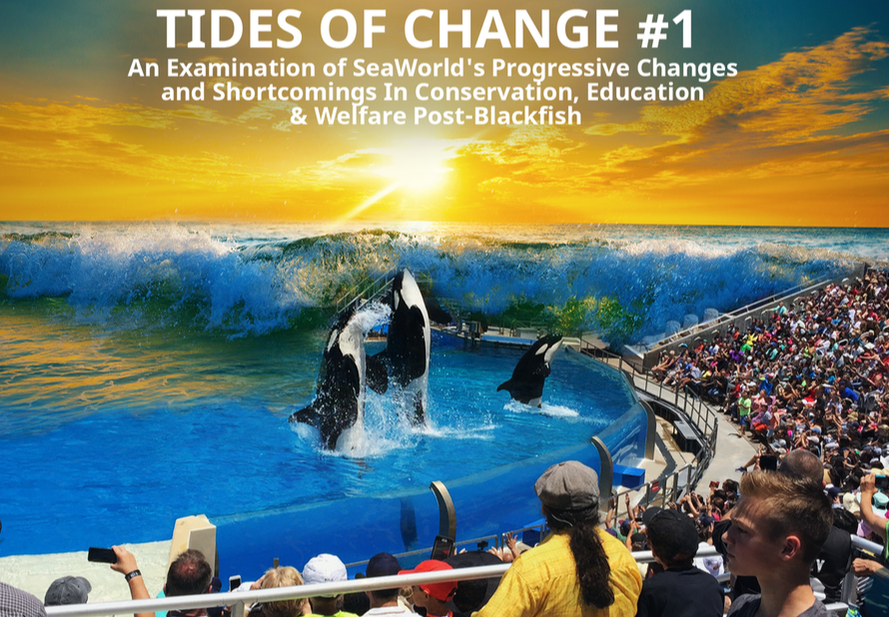
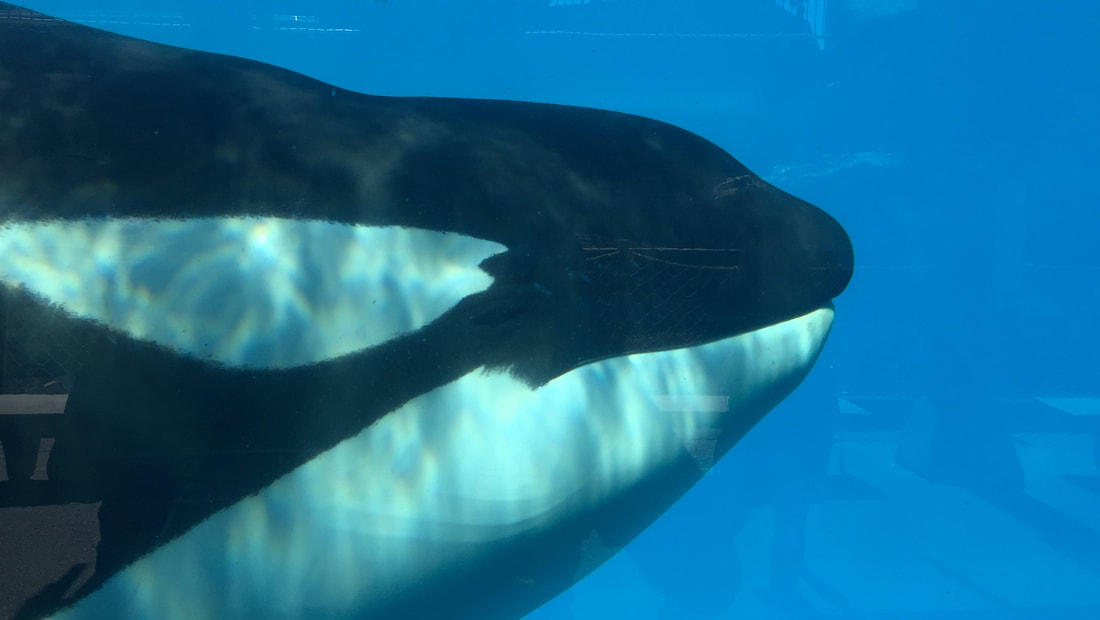
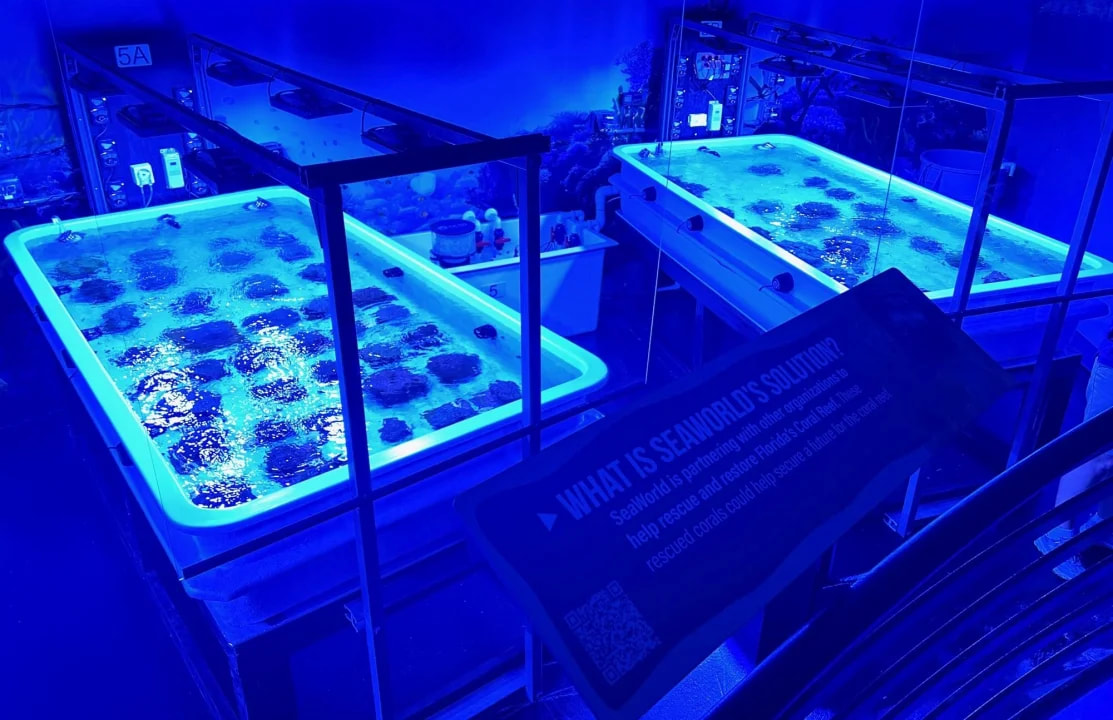
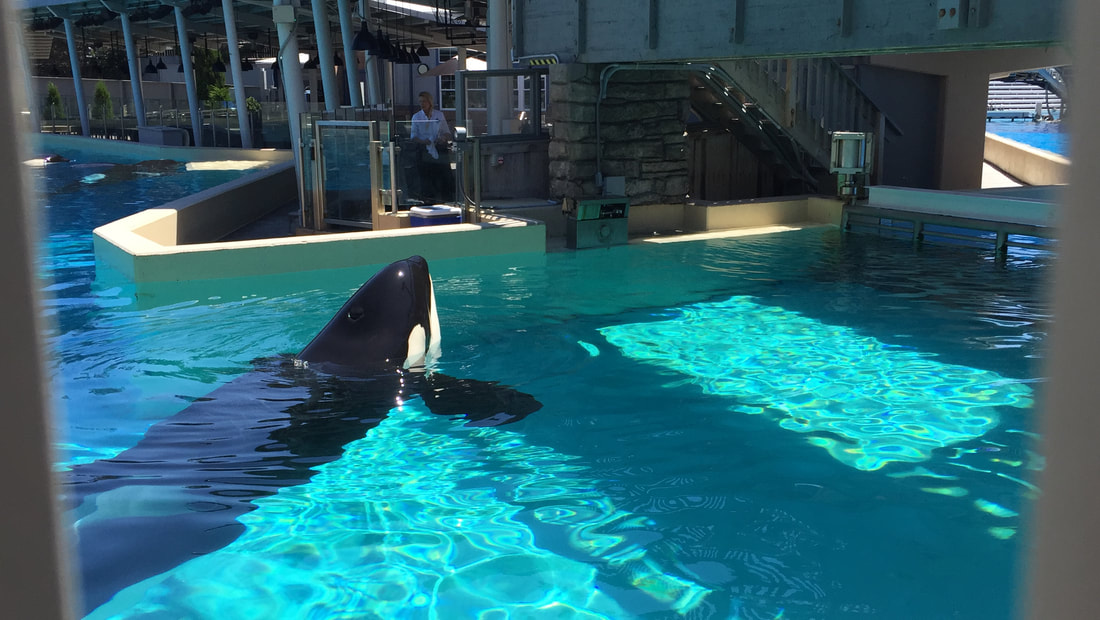
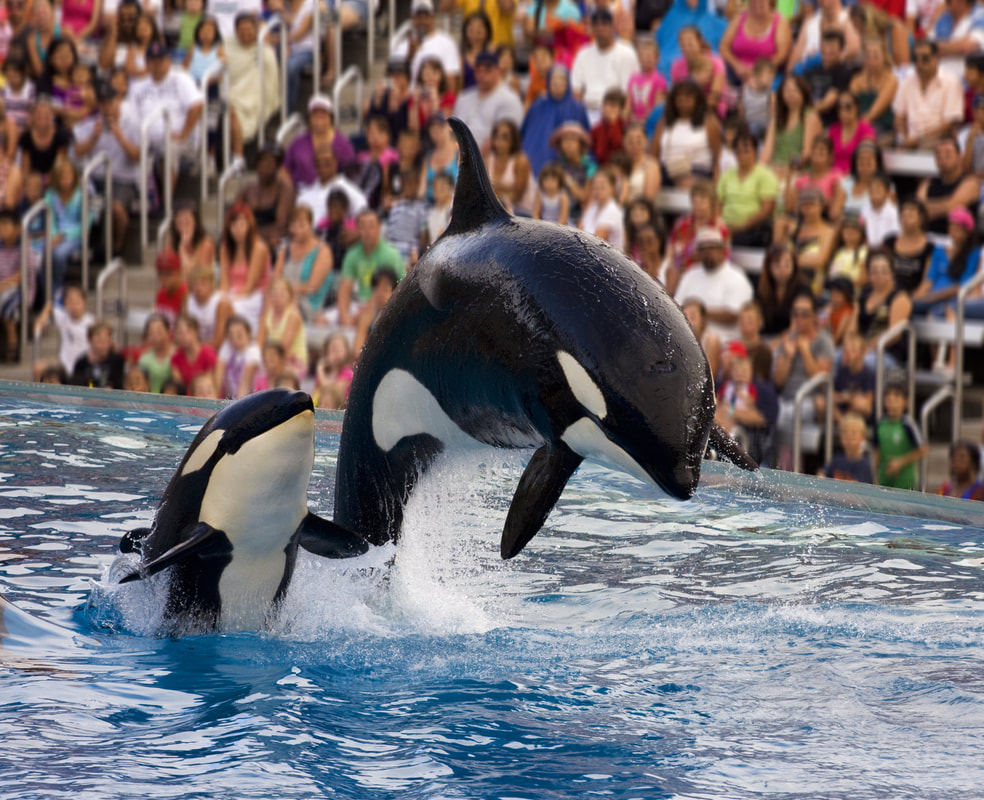
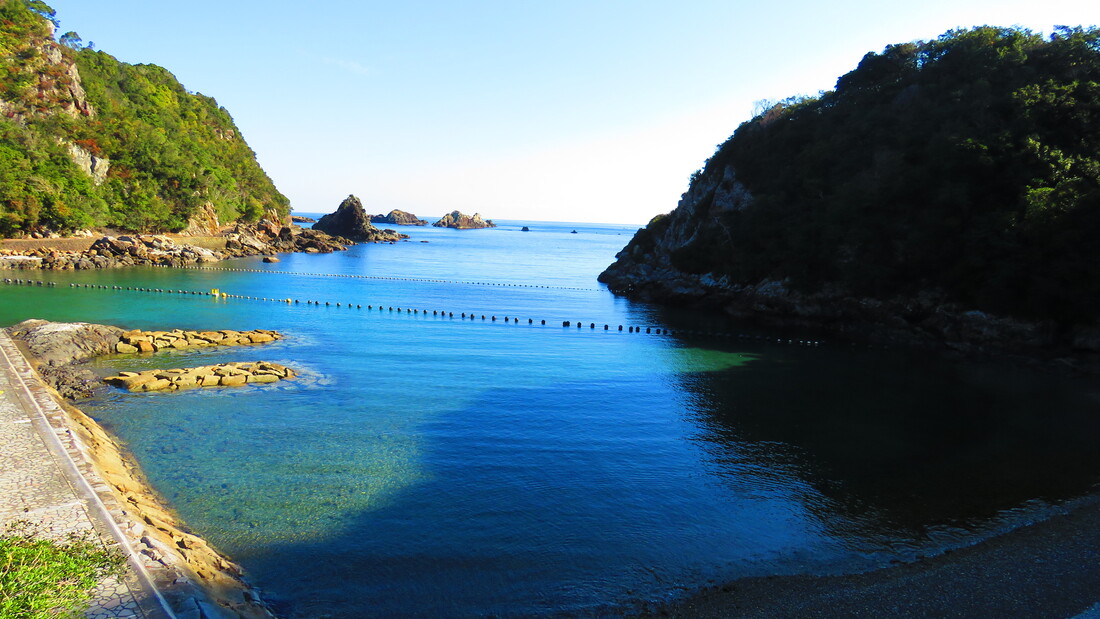
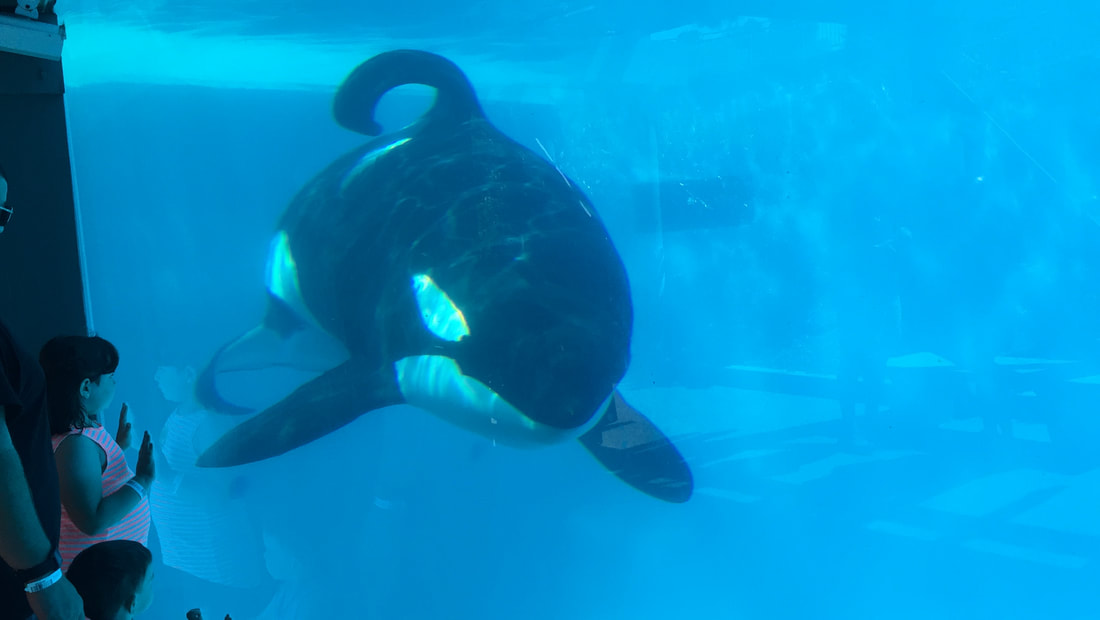
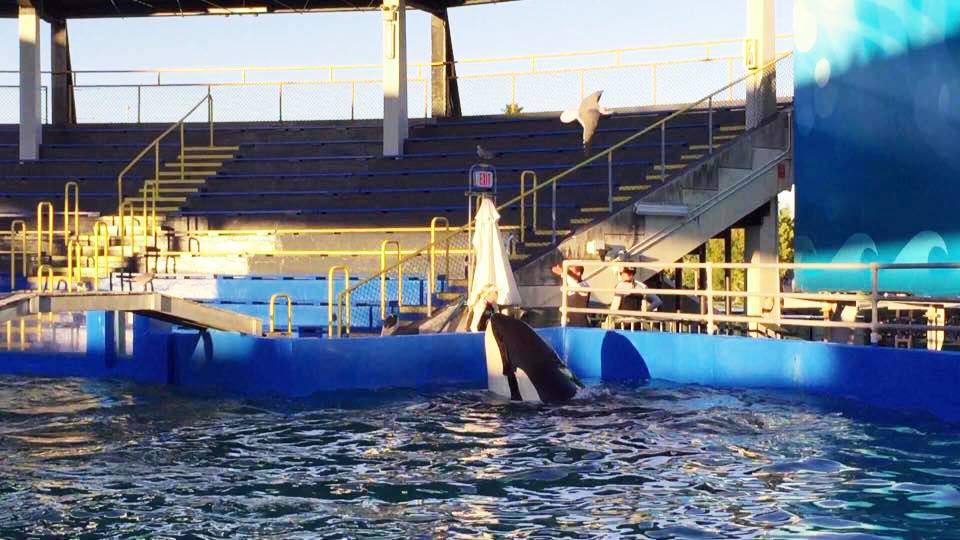
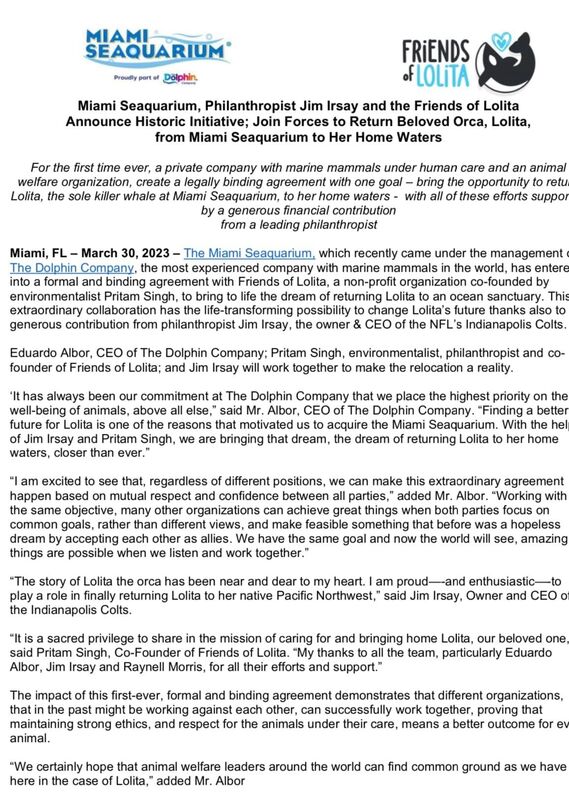
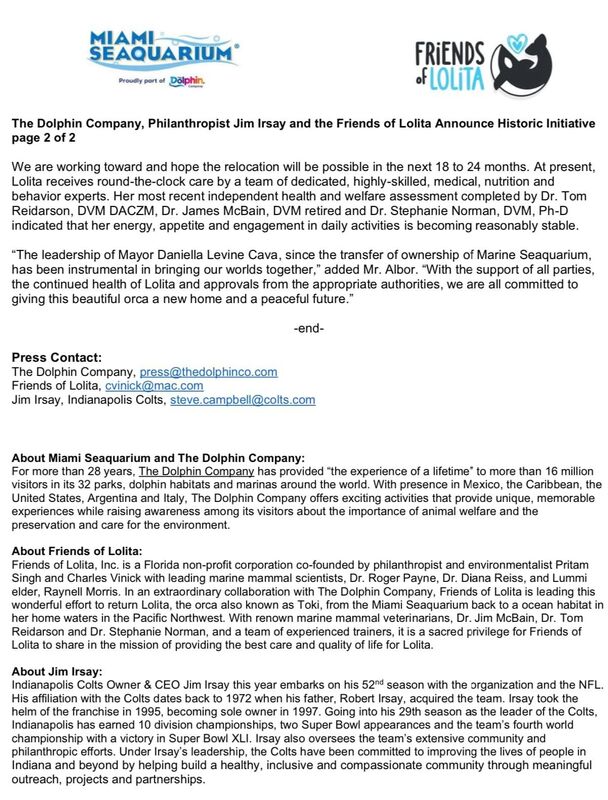
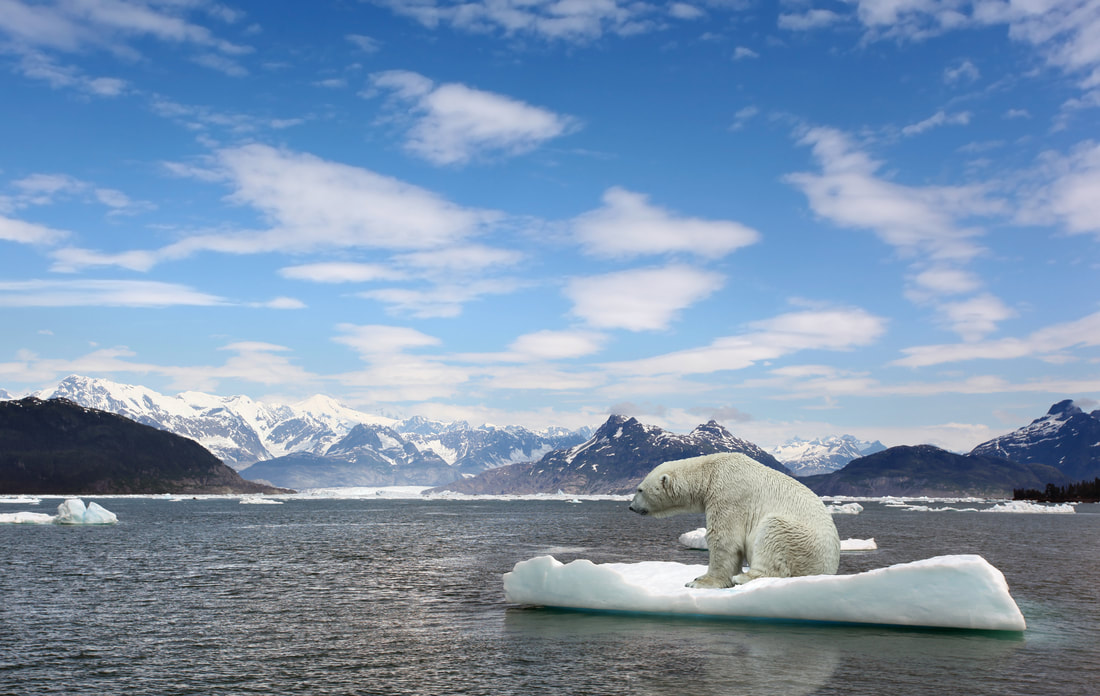
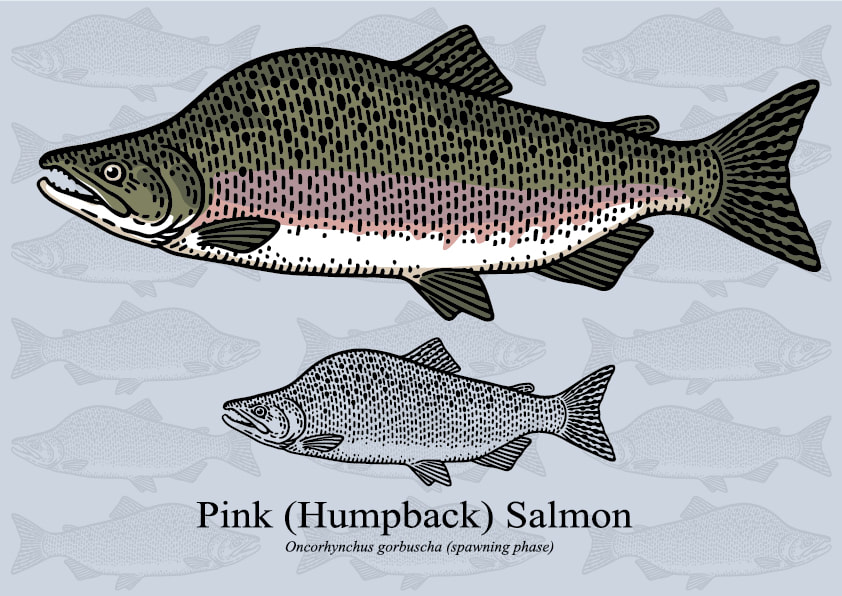
 RSS Feed
RSS Feed